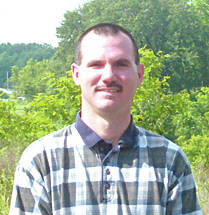The Ohio Department of Insurance, Ohio State Highway Patrol, Ohio Department of Natural Resources and AAA want to remind motorists of the increase in deer-related traffic crashes this time of year.
In 2019, statistics from the Ohio State Highway Patrol show there were 19,375 deer-related crashes on Ohio’s roadways. Of those crashes, four resulted in fatal injuries to motorists and 966 people were injured. Additionally, 46 percent of these crashes occurred in October, November, and December. Some of the top counties for deer-related crashes include Stark, Richland, Lorain, Trumbull, and Hancock with US-30, I-71 and I-80 being the leading roadways in the state.
Deer become much more active during the fall breeding season which occurs from late October through November. Males pursue prospective mates throughout the season. However, they often encounter females that are not yet willing to breed, which can result in pursuits where deer will dart into roadways with little caution. This action leads to an increase in deer-related vehicle accidents this time of year. Drivers are encouraged to be extra cautious in areas where habitat features (fencerows, riparian corridors, or other blocks of forested habitat) intersect a roadway. Deer and other wildlife use these corridors and patches to traverse the landscape.
Colliding with a deer is not only dangerous, it’s also very costly. Recent data estimates the average insurance claim for a deer-vehicle collision in Ohio is nearly $4,000. Vehicle sensors found on newer vehicles continue to increase repair costs. In fact, AAA found these new safety systems can double repair bills for minor collisions (more at Newsroom.AAA.com). Without adequate insurance, drivers are left footing this bill. That’s why it’s important to make sure you’re covered before a crash occurs.
AAA and the Ohio Department of Insurance remind drivers that the optional comprehensive coverage (also known as “other than collision” coverage) portion of an auto insurance policy often is used to pay for deer-vehicle damage repair. Collision or liability-only policies do not cover the damage. With the vast number of costly deer-collisions on Ohio’s roads, it is often a good idea to maintain comprehensive coverage, even with older vehicles.
To avoid animal collisions: Scan the road ahead: Looking ahead helps provide enough reaction time if an animal is spotted. Also, remember some animals, like deer, move in groups, so when there is one, there are usually more in the area. Use high beam headlights if there is no oncoming traffic: This can help you spot deer or other wildlife more quickly and give you time to slow down, move over or honk the horn to scare the animal away. High beams also help in spotting animals’ reflective eyes. Be extra cautious at dawn and dusk: Deer tend to be more active in the early morning and at dusk. That’s why these are peak times for deer-vehicle collisions.
If a collision is unavoidable, apply the brakes firmly and remain in your lane: Swerving to avoid an animal can often cause a more serious crash or cause you to lose control of your vehicle. Drivers who swerve to miss a deer and hit something else may be charged for an at-fault crash.
Always wear a seatbelt and remain awake, alert, and sober: The chances of getting injured when hitting an animal are much higher if you don’t have your seatbelt on. If you’re distracted or drowsy, you’re not properly scanning the road for deer and could end up spotting them too late.
If you do hit a deer: Following the collision, call the police. Avoid making contact with the deer/animal. A frightened and wounded animal can be dangerous and pose a threat when approached or might further injure itself. Activate the vehicle’s hazard lights whether it’s light or dark outside. If possible, move the vehicle to a safe location out of the roadway, and wait for help to arrive. Drivers should contact their insurance agent or company representative as quickly as possible to report any vehicle damage.
As always, motorists are also reminded they can dial #677 from their mobile device to be connected to the nearest Ohio State Highway Patrol Post.
• As we enter November, the start of the fall hunting seasons has been very good and it should only get better. The deer are starting to move a lot more as we enter their breeding season, known as the rut. Expect deer movement to increase over the next few weeks and some of those nocturnal bucks just may show up under your tree stand during shooting hours as they search for breedable does.
The early part of the waterfowl season has been really good despite not having a lot of weather to cause a major migration to occur. Just enough birds have been pushed down from Canada to keep steady action in the duck blinds and even a few early divers are starting to show up. I believe opening up the north zone season much later than usual this season has helped tremendously with the early success. Expect the action to continue to improve as we continue to get more winter like weather.
The walleye and perch bite up on Lake Erie continues to get better. The bigger fish of both species are getting closer to shore as they chase the schools of bait fish to put on the pre-winter feed. Both jumbo perch and Fish Ohio size walleye are being caught when the wind permits the anglers to get on the lake.
Unfortunately, those days have been few and far between especially on the weekends. Perch fishermen are having luck with crappie rigs and minnows and walleye anglers are having most success with slow moving crankbaits. The bigger fish will continue to feed all the way up until ice up, so if you haven’t winterized that boat yet and the weather permits, take advantage of what Mother Erie is providing. It could be a long wait until spring.
Until next time, Good Hunting and Good Fishing!



